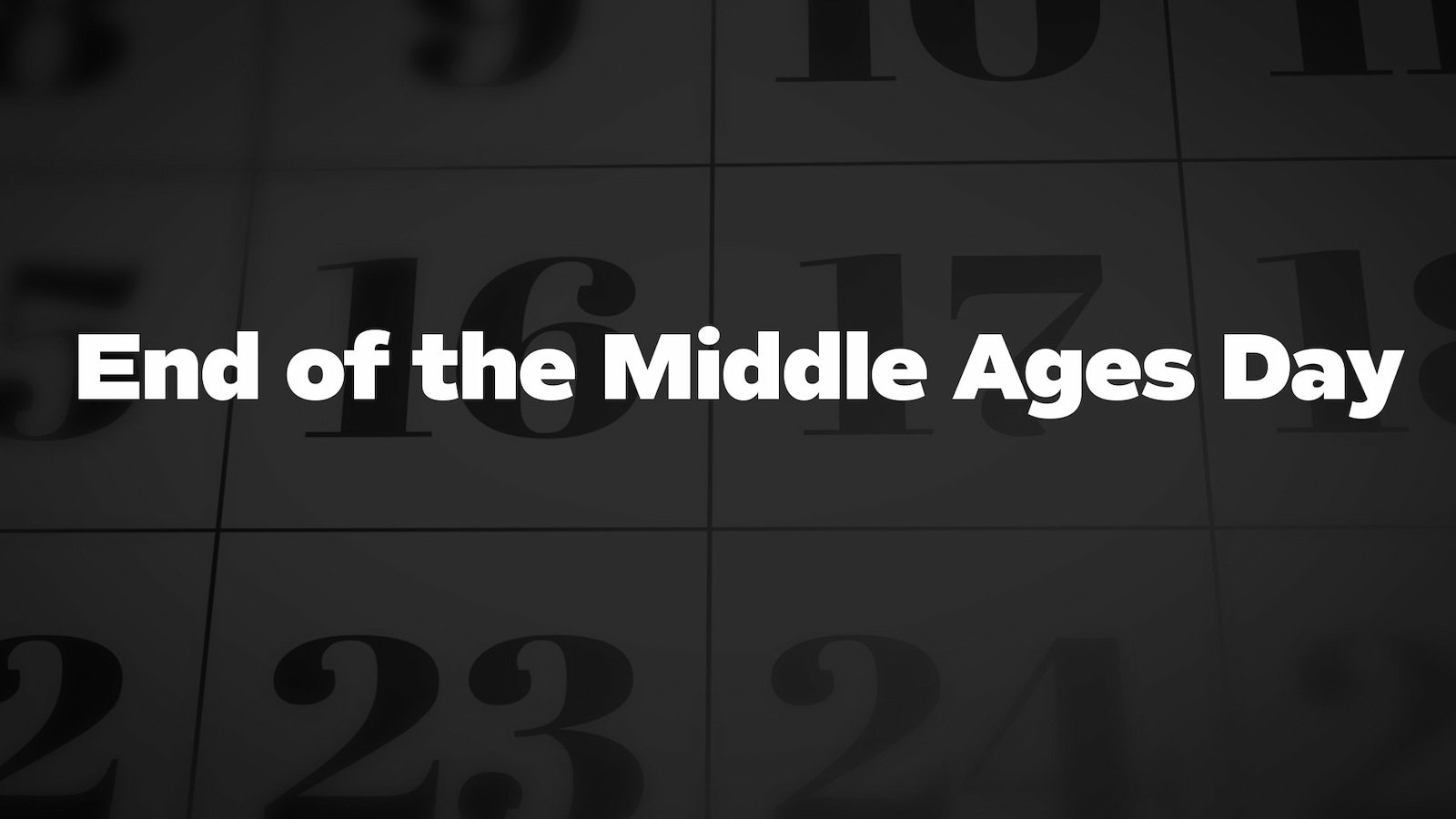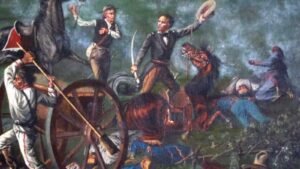End of the Middle Ages Day 2024: Every year, on May 29, the End of the Middle Ages Day is observed. On this day in 1453, Ottoman invaders, commanded by Sultan Mehmed II, attacked Constantinople and deposed Emperor Constantine XI Palaiologos. Many scholars fled the capital city to Italy and revived classical Greek knowledge. Cultural and scientific progress was lowest in the Middle Ages, which are typically divided into early, high, and late. Conversely, the Renaissance superseded the concepts of classical antiquity.
End of the Middle Ages Day: History
Europe entered the Middle Ages, or Dark Ages, after Rome fell in 476 A.D. Due to its lack of scientific, cultural, and political progress, historians termed this period the “Dark Ages”. They saw poverty, gloom, and unfulfilled promises.
On May 29, 1453, the Ottoman Empire invaded the Byzantine capital of Constantinople. Many believe this day marks the end of the Middle Ages and the start of the Renaissance. The Ottoman army of Sultan Mehmed II Fatih besieged Constantinople for two months. The city had 400,000 citizens in the twelfth century, but military invasions reduced it to 50,000 by the 1450s. Byzantine scholars fled Constantinople in fear for their lives and sought sanctuary abroad. Academics in Italy revived Greek and Roman culture, languages, ideas, and art, sparking the Renaissance.
The Catholic Church had the most power in the Middle Ages, despite monarchs and royal leaders. The Church grew, building massive Gothic and Romanesque churches and monasteries. The Islamic empires flourished in Baghdad, Cairo, and Damascus, where Arabic translations of literature and ancient texts were made. The Middle Ages saw the Black Death, a bubonic epidemic that killed 20 million people between 1347 and 1350. The plague was easily spread between city people, killing an estimated 30% of Europe’s population.
Georgia Independence Day 2024 (Georgia): A History of Struggle and Resilience
End of the Middle Ages Day 2024: FAQs
What was the cause of the Middle Ages’ conclusion?
Numerous factors contributed to the Middle Ages’ conclusion. The feudal system’s failure and the Church’s diminished influence over the nation-states were among the most notable examples. While some regard the voyages of Columbus as the conclusion of the Middle Ages, others regard the fall of Constantinople as such.
When did the Middle Ages conclude and commence?
Beginning approximately in 473 and lasting from 1400 to 1500 A.D., the Middle Ages are a historical era in Europe. This period encompassed the period from the decline of the Western Roman Empire to the collapse of the Byzantine Empire.
What was the quality of existence during the Middle Ages?
In comparison to the present day, the Middle Ages were characterized by a lack of variety, harshness, and discomfort. The average lifespan was approximately 32 years, children’s mortality rates were high, and women were considered inferior to males.
End of the Middle Ages Day: Activities
Learn about the Middle Ages.
Numerous texts and books discuss the history of the Middle Ages, as well as the culture, art, and military conquests. The story of Byzantium’s fall to the Ottoman Empire will undoubtedly intrigue you.
Travel to Constantinople
The medieval settlement is currently situated in the contemporary Fatih district of Istanbul, Turkey. Places of interest to visit include the Hagia Sophia Museum and the Gate of St. Romanus.
Indulge in medieval cuisine.
If you are feeling particularly daring, you may also prepare culinary delights that have been enjoyed since the Middle Ages. Although it may appear intricate, garlic bread, beef, roasted poultry, barley, oats, rye, and wheat are all viable options.
Five Surprising Facts About the Middle Ages
Eels are employed as currency.
A record indicates that an individual rented a parcel of land for 26,275 eels.
Long-toed sandals were fashionable.
People with long toes wore the shoes named after Kraków, Poland.
animals that have been found guilty of a crime
In 1457, a sow in Savigny, France, was accused of homicide, convicted, and executed.
England prohibited football.
In 1314, King Edward II issued a proclamation that prohibited the practice of football in London due to noise pollution.
The slaughter of animals in London was prohibited.
King Edward III once prohibited the slaughter of animals in London due to the odor of animal entrails and blood that permeated the entire city.
End of the Middle Ages Day 2024: Importance
A period of historical significance
The Middle Ages are called the “Dark Ages” because they were characterized by little progress. However, the age is also known for its massive Gothic-style buildings and powerful empires.
The era of military conquests
Military victories were a highlight of medieval times. Firearms, ammunition, cannons, and full-body armor were developed during the era.
The transition to the Renaissance
The Renaissance, a period of revival in the arts, philosophy, science, and politics, commences with the conclusion of the medieval era. The events and trends of the Middle Ages had a significant impact on Renaissance scholars, artists, and philosophers.
End of the Middle Ages Day: Dates
| Year | Date | Day |
|---|---|---|
| 2024 | May 29 | Wednesday |
| 2025 | May 29 | Thursday |
| 2026 | May 29 | Friday |
| 2027 | May 29 | Saturday |
| 2028 | May 29 | Monday |
Whooping Crane Day 2024: FAQs, Dates, History, and Activities












